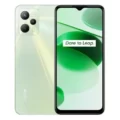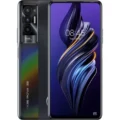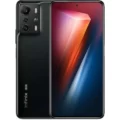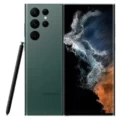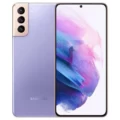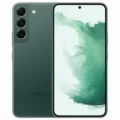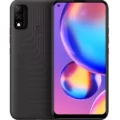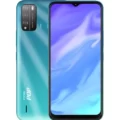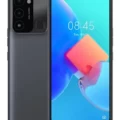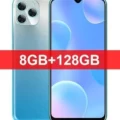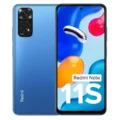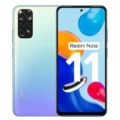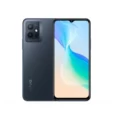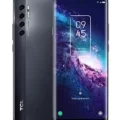Redmi Note 10 vs Redmi Note 10 Pro vs Redmi Note 10 Pro Max
| Product Name | Redmi Note 10Redmi Note 10 ProRedmi Note 10 Pro Max |
| Product Image |  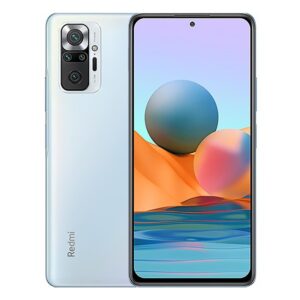  |
| Price | ₹12,499.00 ₹16,999.00 ₹19,999.00 |
| Our Rating | |
| Brand | Xiaomi Xiaomi Xiaomi |
| Category | Mobiles Mobiles Mobiles |
General
 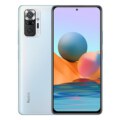  | |
| Device Type | Smart Phone Smartphone Smartphone |
| Model | Redmi Note 10 Redmi Note 10 Pro Redmi Note 10 Pro Max |
| Status | Available Available Available |
| Price | ₹12,499 ₹16,999 ₹19,999 |
Design
   | |
| Type <strong>Design Type</strong> called form factor refers to a mobile phone's size, shape, and style as well as the layout and position of major components of phone. There are three major form factors seen in mobile phones => bar phones, folding phones and sliding phones. | Bar Bar Bar |
| Dimensions | 160.5 x 74.5 x 8.3 mm 164.5 x 76.2 x 8.1 mm 164.5 x 76.2 x 8.1 mm |
| Weight | 178.8 grams 192 Grams 192 Grams |
| Protection | IP53 certified - Splash resistant up to 1 meter and 30 minutes IP53 certified - Splash resistant up to 1 meter and 30 minutes IP53 certified - Splash resistant up to 1 meter and 30 minutes |
| Colors | Frost White, Shadow Black, Aqua Green Glacial Blue, Vintage Bronze, Dark Night Glacial Blue, Vintage Bronze, Dark Night |
Network
   | |
| SIM <strong>SIM</strong> (Subscriber Identity Module) is a small card that contains mobile network subscriber's account information. This allows the phone using the card to attach to a mobile network. The SIM card is most commonly associated with GSM and UMTS mobile networks. Moving a SIM card from one phone to another allows a subscriber to switch mobile phones without having to contact their mobile network carrier. SIM cards can also be used by a phone to store limited amounts of data, such as phone numbers and text messages. | Nano SIM Nano SIM Nano SIM |
| Dual SIM | Yes, 4G + 4G Yes, 4G + 4G Yes, 4G + 4G |
Display
   | |
| Display Type <strong>Display Technology => </strong> A number of display technologies and types used in mobile phones => TFT (Thin Film Transistor), IPS (In-Place Switching), OLED (Organic Light Emitting Diode), AMOLED (Active-Matrix Organic Light-Emitting Diode), Super AMOLED (an even advanced version of AMOLED), Resistive Touchscreen (Resistive touchscreens contain two layer of conductive material with a very small gap between them which acts as a resistance), Capacitive Touchsceen (Capacitive touchscreen technology consists of a layer of glass coated with a transparent conductor) | AMOLED Panel AMOLED Panel AMOLED Panel |
| Size | 6.43 inches 6.67-inch 6.67-inch |
| Resolution | 1080 x 2400 pixels 1080 x 2400 pixels 1080 x 2400 pixels |
| Display Colors <strong>Display Colors</strong> is refers to the number of different shades of colors that the screen is capable of displaying => 64K colors, 256K colors and 16 million colors, Obviously 16M is highest available range of colors and better than others. | 16 million colors 16 million colors 16 million colors |
| Pixel Density <strong>Pixel Density (PPI)</strong> is refers to the concentration of pixels on a particular display, measured in pixels per inch (ppi). Pixel density is calculated by dividing the diagonal pixel resolution of a display by its diagonal size, higher pixel density better display quality. | 409 ppi 395 PPI 395 PPI |
| Touch Screen | Yes, Multitouch Yes, Multitouch Yes, Multitouch |
| Display Protection <strong>Display Protection => </strong> Gorilla Glass is a special alkali-aluminosilicate glass shield with exceptional damage resistance that helps protect mobile displays from scratches, drops, and bumps of everyday use, It is always better to go for a smartphone with Gorilla Glass for that added protection and peace of mind. | Corning Gorilla Glass 3 Corning Gorilla Glass 5 IP53 certified - Splash resistant up to 1 meter and 30 minutes |
| Features | 60 Hz Refresh rate, 180 Hz Touch Sampling rate, 1100 nits peak brightness 120 Hz Refresh Rate, 240Hz Touch Sampling rate, 1200 nits peak Brightness 120 Hz Refresh Rate, 240Hz Touch Sampling rate, 1200 nits peak Brightness |
Media
   | |
| FM Radio | No No No |
| Loudspeaker | Yes Yes Yes |
| Handsfree | 3.5mm Headphone Jack 3.5mm Headphone jack 3.5mm Headphone jack |
Camera
   | |
| Primary <strong>Camera</strong> is able to capture photographs and usually videos, The most important characteristics of a camera are the resolution (measured in megapixels), lens focus type (fixed or automatic), higher megapixel cameras are known to capture higher quality photos, but not always a good measurement of the photos quality. | 48MP + 8MP + 2MP + 2MP 64MP + 8MP + 5MP(macro) + 2MP(depth) 64MP + 8MP + 5MP(macro) + 2MP(depth) |
| Video | Yes, 4K@30fps, 1080p@60fps, 4K@30fps, 1080p@60fps/30fps, Electronic Image Stabilization 4K@30fps, 1080p@60fps/30fps, Electronic Image Stabilization |
| Flash <strong>Flash Light => </strong> There is commonly two types of flash lights are used in camera mobile phones, LED Flash (LED flash offers lower power consumption with drive circuitry that takes up very little room, LEDs can be strobed faster than any other light source), Xenon Flash (xenon flash produces an extremely intense full-spectrum white light for a very short duration) | LED flash |
| Secondary | Yes, 13 MP, 1080p@30fps Yes, 16MP, 1080p@30fps Yes, 16MP, 1080p@30fps |
Software
   | |
| Operating System <strong>OS => </strong> Every computer system run on a base software called Operating System (OS). Operating System controls all basic operations of the computer (such as smartphone, PDAs, tablet computers and other handheld devices). The Operating System allows the user to install and run third party applications (apps), apps are used to add new functionality to the device. | Android v11 Android v11 Android v11 |
| User Interface <strong>UI</strong> or user interface of a device is the look and feel of the on-screen menu system. How it works, its color scheme, how it responds to button presses, all of these things are part of the user interface. | MIUI 12 MIUI 12 MIUI 12 |
| Facebook <strong>Facebook</strong> is a popular free social networking website that allows registered users to create profiles, upload photos and video, send messages and keep in touch with friends, family and colleagues. The site is available in 37 different languages. | |
| Youtube <strong>Youtube</strong> is a popular free video-sharing website, Youtube is the largest video sharing site in the world, Millions of users around the world have created accounts on the site that allow them to upload videos that anyone can watch. |
Hardware
   | |
| Chipset <strong>Chipset</strong> is a group of integrated circuits designed to perform one or a more dedicated functions, often with real time computing constraints, Popular smartphones are equipped with more advanced embedded chipsets that can do many different tasks depending on their programming. | Qualcomm Snapdragon 678 Qualcomm Snapdragon 732G Qualcomm Snapdragon 732G |
| CPU <strong>CPU</strong> (Central Processing Unit) mostly known as processors, CPU processes instructions in order to carry out certain functions that make your device operate properly. Processors are often described as the brain of computers, smartphones and tablets, Smartphones and tablets rely on processors to carry out their every task, Processors are an incredibly important factor in selecting any type of computing device, including your smartphone. | Quad-core (2x2.2 GHz Kryo 460 Gold + 6x 1.7 GHz Kryo Silver) Quad-core (2x2.3 GHz Kryo 470 Gold + 6x1.8 GHz Kryo 470 Silver) Quad-core (2x2.3 GHz Kryo 470 Gold + 6x1.8 GHz Kryo 470 Silver) |
| GPU <strong>GPU</strong> (Graphics Processing Unit) is a single-chip processor designed to rapidly manipulate and alter memory to accelerate the creation of images in a frame buffer intended for output to a display, This includes things such as lighting effects, object transformations, and 3D motion. | Adreno 613 Adreno 618 Adreno 618 |
| RAM (Memory) <strong>RAM</strong> (Random Access Memory) is a type of computer memory that can be accessed randomly, any byte of memory can be accessed without touching the preceding bytes that allows information to be stored and accessed quickly from random locations. RAM is the most common type of memory found in computer systems, smartphones, tablets and other electronic devices. | 6 GB 8 GB 8 GB |
| Internal Storage <strong>Internal Storage</strong> is a data storage space (flash memory) mostly used in smartphones, tablets and other electronic devices where operating system, apps, music, photos, videos, files and other user data Is stored. | 64 GB, 128 GB 128GB 128GB |
| Card Slot <strong>Memory Card Slot</strong> is a special slot for inserting a memory card. Memory cards allow you to expand the phone's built-in memory, A memory card (sometimes called a flash memory card or a storage card) is a small storage medium used to store data such as text, pictures, audio, and video, for use on small, portable or remote computing devices such as mobile phones, mp3 players, digital cameras. | Yes, microSD Yes, microSD Yes, microSD |
| Sensors and Special Features <strong>Sensors</strong> are electronic components that detects and responds to some type of input from the physical environment. The specific input could be light, heat, motion, moisture, pressure and location, The output is generally a signal that is converted to use in computing systems, a location sensor, such as a GPS receiver is able to detect current location of your electronic device. | Fingerprint (side-mounted), accelerometer, gyro, proximity, and compass Fingerprint (Side-mounted), accelerometer, gyro, proximity, and compass Fingerprint (Side-mounted), accelerometer, gyro, proximity, and compass |
Connectivity
   | |
| Bluetooth <strong>Bluetooth</strong> is a wireless communications technology for exchanging data between mobile phones, headsets, computers and other network devices over short distances without wires, Bluetooth technology was primarily designed to support simple wireless networking of personal consumer devices. | Yes, v4.2 with A2DP, EDR, LE Yes, Bluetooth v5.1 Yes, Bluetooth v5.1 |
| Infrared <strong>Infrared</strong> connectivity is an old wireless technology used to connect two electronic devices. It uses a beam of infrared light to transmit information and so requires direct line of sight and operates only at close range. | |
| Wi-fi <strong>Wi-Fi</strong> is a popular wireless networking technology using radio waves to provide high-speed network connections that allows devices to communicate without cords or cables, Wi-Fi is increasingly becoming the preferred mode of internet connectivity all over the world. | Wi-Fi 802.11 a/b/g/n, dual-band, Wi-Fi Direct Wi-Fi 802.11 a/b/g/n, dual-band, Wi-Fi Direct Wi-Fi 802.11 a/b/g/n, dual-band, Wi-Fi Direct |
| Wi-fi Hotspot | |
| USB | Yes, USB Type-C port |
| GPS <strong>GPS</strong> The Global Positioning System is a satellite-based radio navigation system, GPS permits users to determine their position, velocity and the time 24 hours a day, in all weather, anywhere in the world, In order to locate your position, your device or GPS receiver must have a clear view of the sky. | Yes, with A-GPS support and GLONASS, BDS Yes, with A-GPS support and GLONASS, BDS Yes, with A-GPS support and GLONASS, BDS |
| NFC <strong>NFC</strong> (Near field communication) is a set of standards for smartphones and similar devices to establish peer-to-peer radio communications with each other by touching them together or bringing them into proximity, usually no more than a few inches. | |
| HDMI <strong>HDMI</strong> (High-Definition Multimedia Interface) is a compact audio/video interface for transferring uncompressed video data and compressed or uncompressed digital audio data from a HDMI-compliant source device to a compatible computer monitor, video projector, digital television, or digital audio device. | |
| Wireless Charging <strong>Wireless Charging</strong> (Inductive Charging) uses an electromagnetic field to transfer energy between two objects. This is usually done with a charging station. Energy is sent through an inductive coupling to an electrical device, which can then use that energy to charge batteries or run the device. | No No No |
Data
   | |
| GPRS <strong>GPRS</strong> (General Packet Radio Service) is a packet oriented mobile data service on the 2G and 3G cellular communication system's global system for mobile communications (GSM), Generally, GPRS is used for the purpose of wireless data transfer, such as sharing pictures and videos or browsing the Internet via a mobile phone connection. | |
| EDGE <strong>EDGE</strong> (Enhanced Data GSM Environment) is a wireless network technology generally considered the next step in the 2G network offers data transfer rates up to four times faster than ordinary GSM networks, Generally, EDGE is used for the purpose of wireless data transfer, such as sharing pictures and videos or browsing the Internet via a mobile phone connection. |
Messaging
   | |
| SMS <strong>SMS</strong> (Short Messaging Service) is a text messaging service component of phone, Web, or mobile communication systems. It uses standardized communications protocols to allow mobile phone devices to exchange short text messages over the networks. | Yes Yes Yes |
| MMS <strong>MMS</strong> (Multimedia Messaging Service) is a standard way to send messages that include multimedia content (audio clips, video clips and images) to and from mobile phones over wireless networks using the WAP protocol. |
Battery
   | |
| Battery Type <strong>Battery Type => </strong> Cell phones run on various kinds of batteries depending on the manufacturer, phone size or shape and features. There are basically four types of cell phone batteries => Lithium Polymer, Lithium Ion, Nickel Metal Hydride and Nickel Cadmium. | Li-Poly (Lithium Polymer) Li-Poly (Lithium Polymer) Li-Poly (Lithium Polymer) |
| Capacity <strong>Battery Capacity</strong> is a measure (typically in Amp-hr) of the charge stored by the battery, and is determined by the mass of active material contained in the battery. The battery capacity represents the maximum amount of energy that can be extracted from the battery under certain conditions. | 5000 mAh with 33W fast charging support 5020 mAh with 33W fast charging support 5020 mAh with 33W fast charging support |
| Placement | Non-removable Non-removable Non-removable |

